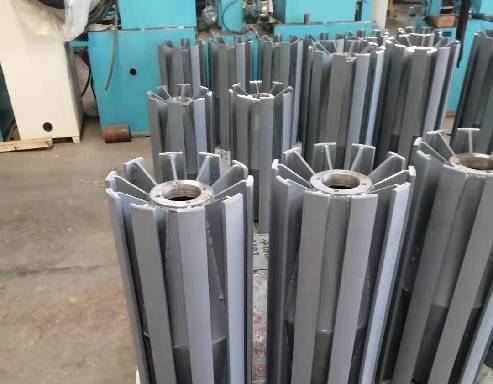 Afrikaans
Afrikaans  Albanian
Albanian  Amharic
Amharic  Arabic
Arabic  Armenian
Armenian  Azerbaijani
Azerbaijani  Basque
Basque  Belarusian
Belarusian  Bengali
Bengali  Bosnian
Bosnian  Bulgarian
Bulgarian  Catalan
Catalan  Cebuano
Cebuano  Corsican
Corsican  Croatian
Croatian  Czech
Czech  Danish
Danish  Dutch
Dutch  English
English  Esperanto
Esperanto  Estonian
Estonian  Finnish
Finnish  French
French  Frisian
Frisian  Galician
Galician  Georgian
Georgian  German
German  Greek
Greek  Gujarati
Gujarati  Haitian Creole
Haitian Creole  hausa
hausa  hawaiian
hawaiian  Hebrew
Hebrew  Hindi
Hindi  Miao
Miao  Hungarian
Hungarian  Icelandic
Icelandic  igbo
igbo  Indonesian
Indonesian  irish
irish  Italian
Italian  Japanese
Japanese  Javanese
Javanese  Kannada
Kannada  kazakh
kazakh  Khmer
Khmer  Rwandese
Rwandese  Korean
Korean  Kurdish
Kurdish  Kyrgyz
Kyrgyz  Lao
Lao  Latin
Latin  Latvian
Latvian  Lithuanian
Lithuanian  Luxembourgish
Luxembourgish  Macedonian
Macedonian  Malgashi
Malgashi  Malay
Malay  Malayalam
Malayalam  Maltese
Maltese  Maori
Maori  Marathi
Marathi  Mongolian
Mongolian  Myanmar
Myanmar  Nepali
Nepali  Norwegian
Norwegian  Norwegian
Norwegian  Occitan
Occitan  Pashto
Pashto  Persian
Persian  Polish
Polish  Portuguese
Portuguese  Punjabi
Punjabi  Romanian
Romanian  Russian
Russian  Samoan
Samoan  Scottish Gaelic
Scottish Gaelic  Serbian
Serbian  Sesotho
Sesotho  Shona
Shona  Sindhi
Sindhi  Sinhala
Sinhala  Slovak
Slovak  Slovenian
Slovenian  Somali
Somali  Spanish
Spanish  Sundanese
Sundanese  Swahili
Swahili  Swedish
Swedish  Tagalog
Tagalog  Tajik
Tajik  Tamil
Tamil  Tatar
Tatar  Telugu
Telugu  Thai
Thai  Turkish
Turkish  Turkmen
Turkmen  Ukrainian
Ukrainian  Urdu
Urdu  Uighur
Uighur  Uzbek
Uzbek  Vietnamese
Vietnamese  Welsh
Welsh  Bantu
Bantu  Yiddish
Yiddish  Yoruba
Yoruba  Zulu
Zulu Conveyor Pulley Design and Performance Standards for Optimal Efficiency and Durability
Conveyor Pulley Specifications An Overview
In the realm of material handling, conveyor systems play a crucial role in the efficiency and effectiveness of transportation processes across various industries. A vital component of these systems is the conveyor pulley, which not only aids in the movement of materials but also serves as a critical part of the overall system design. Understanding conveyor pulley specifications is essential for engineers, designers, and operators to ensure optimal performance and longevity of the equipment.
What is a Conveyor Pulley?
A conveyor pulley is a cylindrical device that serves as a support structure in conveyor systems. They are typically mounted at the ends of the conveyor belt and serve various functions, including redirecting the belt, supporting its weight, and providing tension. The main types of conveyor pulleys include drive pulleys, return pulleys, tail pulleys, and bend pulleys, each of which plays a unique role within the conveyor system.
Key Specifications to Consider
When selecting the appropriate conveyor pulley, it is essential to consider several critical specifications that influence the performance and durability of the pulley
1. Diameter The diameter of the pulley is one of the most significant factors affecting the conveyor system's performance. A larger diameter pulley reduces the risk of belt damage and increases the efficiency of material handling. Typical diameters range from a few inches to several feet, depending on the application and the type of materials being transported.
2. Material Conveyor pulleys are commonly constructed from materials such as steel, aluminum, or plastic, each offering different strengths and weaknesses. Steel pulleys are favored for their durability and strength, making them suitable for heavy-duty applications. Aluminum pulleys, while lighter, offer resistance to corrosion, making them ideal for applications where weight is a concern.
conveyor pulley specification

3. Face Width The face width of a pulley refers to the width of the cylindrical surface that supports the conveyor belt. A wider face width can provide better support for the belt and improve stability, especially in heavy-load applications. Selecting the proper face width is critical for minimizing belt drift and ensuring a smooth operation.
4. End Disk Configuration The configuration of the end disks (or end caps) is another important aspect. End disks are designed to keep the belt in place and prevent lateral movement. They can be flat, conical, or tapered, with the choice depending on the specific application and the type of belt being used.
5. Lagging Lagging refers to a cover applied to the pulley’s surface to enhance grip and reduce slippage. Various lagging materials, such as rubber or ceramic, can be utilized depending on the level of friction required and the materials being transported. Proper lagging increases the conveyor's efficiency and prolongs the life of the belt.
6. Weight Capacity Each conveyor pulley must be chosen based on the weight capacity required for the specific application. This involves calculating the total load the pulley will support, including the weight of the belt and the materials being transported. Engineers often refer to load tables or specifications provided by manufacturers to ensure the selected pulley can handle the intended loads.
7. Tension Rating The tension rating of a conveyor pulley is crucial for the overall operation since it determines how much tension the system can maintain without stretching the belt. A properly rated pulley will lead to increased efficiency and a longer lifespan for the entire conveyor system.
Conclusion
Understanding conveyor pulley specifications is vital for achieving optimal performance and reliability in any material handling system. By considering factors such as diameter, material, face width, end disk configuration, lagging, weight capacity, and tension rating, operators and engineers can select the appropriate pulleys for their specific needs. Ultimately, investing time and resources in proper pulley selection will lead to enhanced efficiency, reduced maintenance costs, and extended system lifespan, ensuring a smooth flow of operations in any industrial setting.
-
Revolutionizing Conveyor Reliability with Advanced Rubber Lagging PulleysNewsJul.22,2025
-
Powering Precision and Durability with Expert Manufacturers of Conveyor ComponentsNewsJul.22,2025
-
Optimizing Conveyor Systems with Advanced Conveyor AccessoriesNewsJul.22,2025
-
Maximize Conveyor Efficiency with Quality Conveyor Idler PulleysNewsJul.22,2025
-
Future-Proof Your Conveyor System with High-Performance Polyurethane RollerNewsJul.22,2025
-
Driving Efficiency Forward with Quality Idlers and RollersNewsJul.22,2025





























